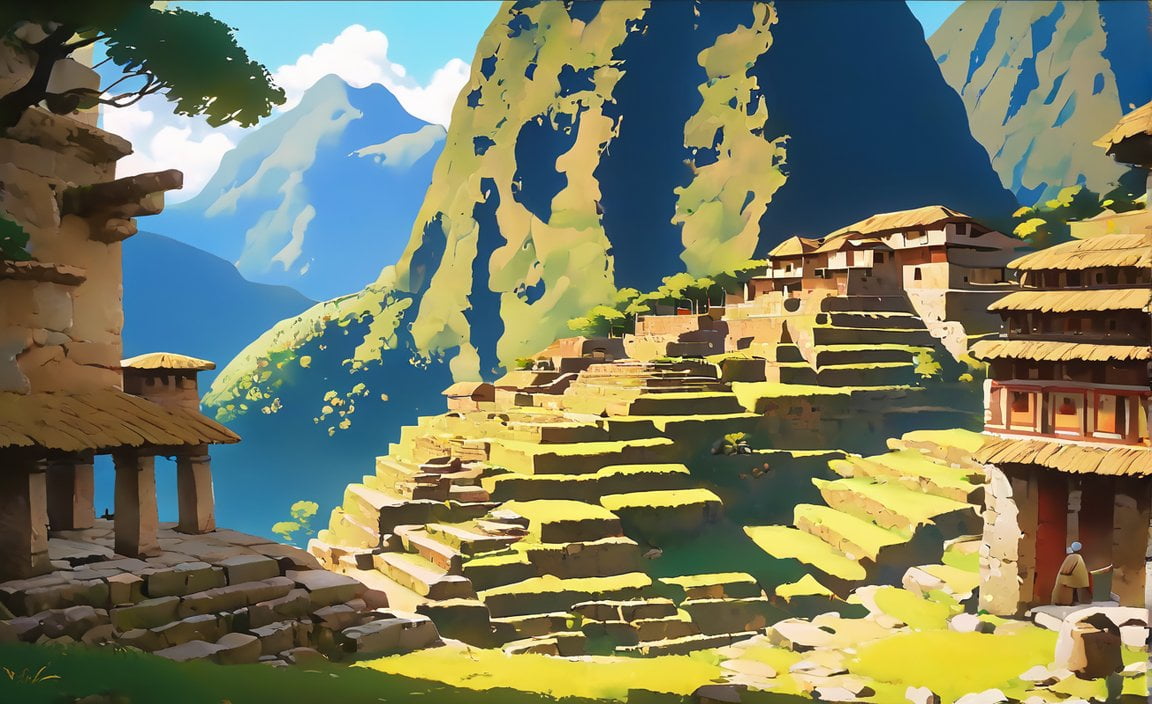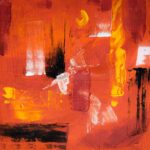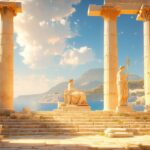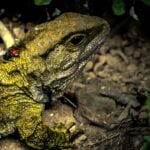Unraveling the Mysteries of Early Peru Inhabitants: Insights from an Archaeologist
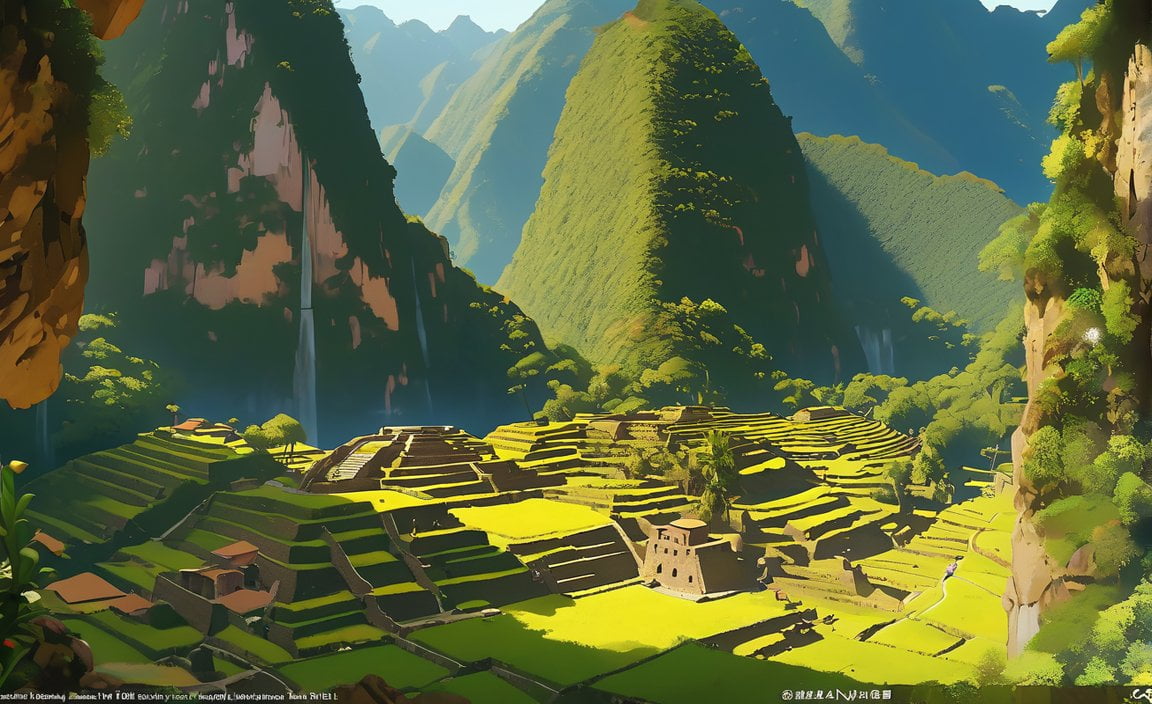
Step into the intriguing world of Early Peru inhabitants as we delve into the hidden secrets of their ancient civilization. Led by a seasoned archaeologist with over a decade of experience in uncovering the enigmatic remains left by these early societies, this article aims to shed light on their culture, customs, and technological advancements. Through meticulous fieldwork and astute analysis, valuable insights have been gained, allowing us to paint a vivid picture of the extraordinary achievements and invaluable contributions made by the early inhabitants of Peru to human civilization. Join us on this enthralling journey as we uncover the untold stories of a fascinating era.
Key Takeaways:
- The first inhabitants of Peru were hunters and gatherers who arrived more than 20,000 years ago. They relied on the land and natural resources for sustenance.
- The Paracas culture, which emerged around 700 BC, was known for their exceptional textile skills.
- The Nazca culture, known for the famous Nazca Lines, appeared around 300 AD and were experts in desert conditions, implementing innovative irrigation systems.
- The Mochica culture, led by military authorities like the Lord of Sipan, was renowned for their painted pottery vessels featuring portraits.
- The Tiahuanaco culture, which emerged around 200 AD, introduced agricultural terraces and had a significant influence spanning parts of Peru, Bolivia, and Chile.
Early Peru Inhabitants
In this article, we will explore the captivating history of the early inhabitants of Peru. From the first hunter-gatherers to the advanced civilizations that thrived in the region, we will unravel the mysteries of their cultures, customs, and achievements. Join me on this journey as we delve into the fascinating world of the Early Peru inhabitants.
The First Inhabitants – Hunters and Gatherers
Who were the first inhabitants of Peru?
The story begins more than 20,000 years ago when the first explorers arrived in the territory of Latin America. These early settlers were hunters and gatherers who relied on the land and its abundant resources for survival. They used primitive tools made from earth and honed their skills in the art of survival.
Paccaicasa, located in present-day Ayacucho province, was one of the settlements that housed these early inhabitants. It is a place steeped in history, where remnants of their existence still linger to this day.
Paracas Culture – Masters of Textiles
The Paracas culture emerged around 700 BC along the south coast of Peru. They were known for their extraordinary textile skills, creating intricate designs and vibrant patterns that adorned their clothing and fabrics. These textiles were not merely garments but expressions of their culture and identity.
Imagine the dedication and patience required to craft such remarkable pieces of art. The Paracas people truly left their mark on history through their mastery of the textile arts.
Nazca Culture – Mysteries in the Desert
The Nazca culture, which arose around 300 AD, is synonymous with the enigmatic Nazca Lines. These massive geoglyphs etched into the desert floor have puzzled archaeologists and historians for centuries. How and why were these intricate designs created? What purpose did they serve?
The Nazca people were experts in navigating the coastal desert and implemented ingenious irrigation systems through underground channels. Their ability to thrive in such harsh conditions is a testament to their resourcefulness and adaptability.
Mochica Culture – Lords of the Pottery
The Mochica culture, governed by military authorities such as the Lord of Sipan, flourished in Peru from the 1st to the 7th century AD. They were renowned for their exquisite pottery vessels adorned with intricate portraits. These vessels not only showcased their artistic prowess but also provided valuable insights into their societal hierarchy and belief systems.
Each pottery vessel tells a story, a glimpse into the lives and customs of the Mochica people. Through meticulous analysis, we can uncover the riches of their culture and unravel the mysteries held within their intricate artwork.
Tiahuanaco Culture – Pioneers of Agriculture
The Tiahuanaco culture emerged around 200 AD in the region of Callao and left an indelible mark on Peru, Bolivia, and Chile. They were pioneers in implementing the use of agricultural terraces, a farming technique that allowed them to cultivate the rugged terrain of the Andean highlands.
Think of these agricultural terraces as staircases leading to sustenance and abundance. The Tiahuanaco people ingeniously transformed the unforgiving landscape into thriving farmlands, ensuring their communities’ survival and prosperity.
Through the lens of archaeology, we can unlock the extraordinary achievements and contributions of the Tiahuanaco culture.
Unveiling the Past, Enriching Our Present
As an archaeologist specializing in pre-Columbian civilizations, my passion lies in unraveling the mysteries of the early inhabitants of Peru. Through extensive fieldwork, meticulous analysis, and a deep understanding of their culture and artifacts, I strive to shed light on their rich history and extraordinary achievements.
The early Peru inhabitants were more than mere footnotes in history. They were innovators, artists, engineers, and visionaries who left an enduring legacy. By embracing their past, we gain invaluable insights that can enrich our present and shape a better future.
So, let us embark on this archaeological adventure, peeling back the layers of time and discovering the remarkable stories and accomplishments of the early Peru inhabitants. Together, we will uncover the mysteries that have remained hidden for centuries and celebrate the ingenuity and resilience of these ancient peoples.
Intrigued by the question “What eats tigers?” Find the answer and explore fascinating information about tiger predators in our comprehensive article on What eats tigers.
Interested in tracing the rich and illustrious lineage of Genghis Khan? Uncover the intricate details of the renowned conqueror’s family tree by clicking on Genghis Khan family tree.
If you’re eager to expand your knowledge of Mesopotamia, dive into our article on Mesopotamia vocabulary to familiarize yourself with key terms and concepts from this ancient civilization.
Take a step back in time and learn about the architectural marvels of the 1600s with our captivating article on Houses from the 1600s. Discover the unique features and styles of these historical dwellings.
Seeking information on the first president from the first U.S. state, as mentioned in The New York Times? Satiate your curiosity by clicking on First president from the first US state NYT to unravel this intriguing historical tidbit.
Embark on a journey to ancient Greece and uncover the mysteries of this fascinating civilization through our comprehensive article on Ancient Greece vocabulary. Expand your knowledge of the language and culture that shaped Western civilization.
Religious Beliefs and Rituals of Early Peru Inhabitants
Before the arrival of European influence and the spread of Roman Catholicism, the early inhabitants of Peru practiced a polytheistic religion deeply infused with their daily lives and rituals. With a belief in the spiritual realm and a connection to the forces of nature, their religious customs played a significant role in shaping their society. As an archaeologist specializing in pre-Columbian civilizations, I have unraveled fascinating insights into the religious beliefs and rituals of these ancient Peruvians.
Animistic Beliefs and Nature Worship
The early Peru inhabitants had a profound reverence for nature and believed in the presence of powerful spirits inhabiting mountains, rivers, and other natural phenomena. They saw these spirits as deities that controlled various aspects of their lives such as fertility, weather patterns, and agricultural bounties. Through intricate rituals and offerings, they sought to maintain a harmonious relationship with the natural world.
Importance of Sun Worship
Among the various deities and gods revered by the ancient Peruvians, their worship of the Sun held paramount importance. The Incas, in particular, saw the Sun as the divine entity responsible for their tribe’s fortunes and well-being. Elaborate sun rituals and ceremonies were conducted to express gratitude and seek blessings. Temples and sacred sites were constructed to honor the Sun, showcasing the architectural and engineering prowess of these early civilizations.
Ritualistic Sacrifices and Offerings
Religious rituals often involved animal and sometimes even human sacrifices. These acts were believed to appease the gods and ensure prosperity and protection. The sacrifice could range from small offerings to elaborate ceremonies involving the participation of the entire community. The symbolism behind these acts was deeply ingrained in their religious beliefs and served as a means to maintain a cosmic balance between the spiritual and human realms.
Shamanic Practices and Divination
Shamans played a vital role in the religious and spiritual life of early Peru inhabitants. These spiritual leaders were believed to have the ability to communicate with the divine and possess profound knowledge of healing practices, divination, and prophecy. Through trance-like states induced by hallucinogenic substances, such as San Pedro cactus, shamans engaged in spiritual journeys to gain insights from the spiritual world and provide guidance to their community.
Integration of Catholicism and Traditional Beliefs
With the arrival of European colonizers, Peru experienced a fusion of Catholicism with the traditional indigenous beliefs. This syncretism led to the incorporation of Catholic rituals, symbols, and saints within the existing indigenous religious practices. The blending of these two belief systems created a unique spiritual landscape in Peru, where indigenous people have continued to preserve and practice their traditional customs alongside Catholic traditions.
Key Takeaways:
- Early Peru inhabitants practiced a polytheistic religion, with nature worship and animistic beliefs being central to their spiritual practices.
- Sun worship, especially by the Incas, held immense significance and was expressed through elaborate rituals and architectural marvels.
- Ritualistic sacrifices and offerings, both animal and human, played a role in maintaining a connection with the gods and seeking their favor.
- Shamans served as spiritual leaders and healers, engaging in divination practices and acting as intermediaries between the spiritual and human realms.
- The integration of Catholicism with indigenous beliefs resulted in a unique spiritual landscape in Peru, where both religious systems coexist.
Sources:
– LimaEasy: Religion and Gods in Ancient Peru
– Adventure Life: Peru’s Religion, Culture, History, Food, & Languages
Technological Advancements and Innovations of Early Peru Civilizations
Cupisnique and Chavín: Pioneers of Peruvian Culture
- The Cupisnique and Chavín cultures were early inhabitants of Peru, contributing to the origins of Peruvian culture.
- The Cupisnique culture existed on the north coast of Peru and coexisted with the Chavín culture.
- These cultures played a significant role in shaping Peruvian culture, which is a amalgamation of diverse ethnic groups.
Advancements in Agriculture and Irrigation
- By 200 B.C., civilizations in Peru had evolved into more complex political forms.
- Extensive agriculture was practiced, and advanced irrigation systems were built across the deserts of the north and central coast.
- These irrigation systems allowed for the cultivation of crops in arid regions, leading to increased food production and population growth.
Norte Chico: America’s Oldest Civilization
- The Norte Chico civilization, located along Peru’s coast, is considered the oldest civilization in the Americas.
- It existed around 4,000 to 1,800 B.C. and is recognized as one of the six cradles of civilization worldwide.
- The development of complex societies in Norte Chico marked a significant milestone in human history.
The Magnificent Chavín Civilization
- The Chavín civilization, which thrived in the northern Andes between 1,500 B.C. and 200 B.C., is one of the most important ancient groups in Peru.
- Known for their impressive architectural achievements, the Chavín constructed monumental buildings and elaborate underground passages.
- They also possessed sophisticated metalworking skills, creating intricate gold and silver jewelry.
Contributions of Other Ancient Cultures
- Peru’s pre-Columbian history encompasses a rich tapestry of ancient cultures, such as the Moche and Tiwanaku.
- The Moche civilization, from the 1st to 7th century AD, excelled in pottery and left behind artifacts that provide invaluable insights into their society.
- The Tiwanaku culture, around 200 AD, pioneered the construction of agricultural terraces in the Andean highlands.
Key Takeaways:
- The Cupisnique and Chavín cultures played a crucial role in shaping Peruvian culture.
- Early Peruvian civilizations advanced in agriculture and developed sophisticated irrigation systems.
- The Norte Chico civilization is recognized as the oldest civilization in the Americas.
- The Chavín civilization showcased remarkable architectural and metalworking skills.
- Peru’s rich pre-Columbian history includes other ancient cultures, such as the Moche and Tiwanaku.
Sources:
– Ancient Civilizations World – Peru
– ScienceDaily – Ancient Peru: Major discovery of early human life
Legacy and Influence of Early Peru Civilizations on Modern-Day Society
Key Takeaways:
- Early Peru civilizations, such as the Inca Empire and the Lima culture, have left a lasting legacy and have had a significant influence on modern-day Peruvian society.
- The rich history, culture, and achievements of these civilizations continue to shape various aspects of Peru, including architecture, agriculture, art, and spirituality.
- The advancements in agricultural practices, irrigation systems, and terraced cultivation introduced by these ancient civilizations are still being utilized today, contributing to Peru’s agricultural success.
- The intricate textile skills and designs of the Paracas culture, coupled with the Nazca Lines of the Nazca culture, have had a profound impact on modern Peruvian art and craftsmanship.
- The incorporation of traditional indigenous beliefs and practices, alongside Catholicism introduced during the colonial period, has resulted in a unique syncretism that defines Peruvian spirituality.
- The oral traditions and historical narratives passed down by these early civilizations have helped preserve and promote ancestral knowledge, fostering a sense of cultural identity among the indigenous population.
- Peru’s tourism industry, which plays a crucial role in its economic development, relies heavily on the fascination and interest in the ancient civilizations and archaeological sites of the region.
Throughout history, the civilizations of Early Peru have left an indelible mark on the cultural, social, and economic fabric of modern-day society. From the grandeur of the Inca Empire to the intricate designs of the Lima culture, their legacy continues to influence and shape Peru in numerous ways.
Architectural Marvels and Agricultural Innovations
The architectural marvels of the Inca Empire, such as Machu Picchu and Sacsayhuaman, stand as a testament to their advanced engineering and construction skills. These awe-inspiring structures not only attract tourists from around the world but also serve as a source of inspiration for contemporary architects and engineers.
But the influence of Early Peru civilizations goes beyond aesthetics. Their agricultural innovations, like terraced cultivation and irrigation systems, revolutionized farming practices in the Andean highlands, allowing crops to thrive in arid regions. Even today, these ancient techniques contribute to Peru’s agricultural success and its ability to sustain its population.
Artistic Mastery and Spiritual Syncretism
The Paracas culture, known for their exquisite textile skills and intricate designs, continues to inspire modern Peruvian artisans. Their craftsmanship is not only preserved in museums but also finds contemporary expressions in traditional clothing and handicrafts.
The mysterious Nazca Lines, created by the Nazca culture, mesmerize visitors with their massive geometric shapes etched into the desert floor. The influence of these ancient artists can be seen in modern Peruvian art, with their abstract motifs and ancient symbology finding resonance in contemporary artistic expressions.
In the realm of spirituality, the Early Peru civilizations practiced animistic beliefs and worshiped nature. These beliefs, deeply ingrained in their societies, have persisted through the ages and merged with Catholicism during the colonial period. The resulting syncretism has created a spiritual landscape where indigenous traditions and Catholic rituals coexist, showcasing the enduring influence of Early Peru civilizations on spirituality in modern-day Peru.
Preserving Ancestral Knowledge and Cultural Identity
The stories, legends, and oral traditions passed down by these ancient civilizations have played a crucial role in preserving and promoting ancestral knowledge. Indigenous communities continue to honor these traditions, ensuring the transmission of historical narratives from one generation to the next. This preservation of cultural heritage fosters a sense of cultural identity and helps reinforce the values and customs inherited from Early Peru civilizations.
Tourism and Economic Development
The rich history and archaeological sites associated with the Early Peru civilizations have become a significant driver of Peru’s tourism industry. Visitors come from all corners of the globe to marvel at the remnants of these ancient civilizations and to immerse themselves in the fascinating stories they carry. The economic benefits of tourism are evident, providing employment opportunities and supporting local communities.
In conclusion, the legacy and influence of Early Peru civilizations on modern-day society cannot be overstated. Their advancements in agriculture, their artistic mastery, their spiritual beliefs, and their invaluable cultural heritage continue to shape Peru, providing a bridge between the past and the present. By unraveling the mysteries left by these civilizations, we gain a deeper understanding of our shared human history and the profound contributions made by the early inhabitants of Peru.
Sources:
– Britannica – Peru
– Wikipedia – History of Peru
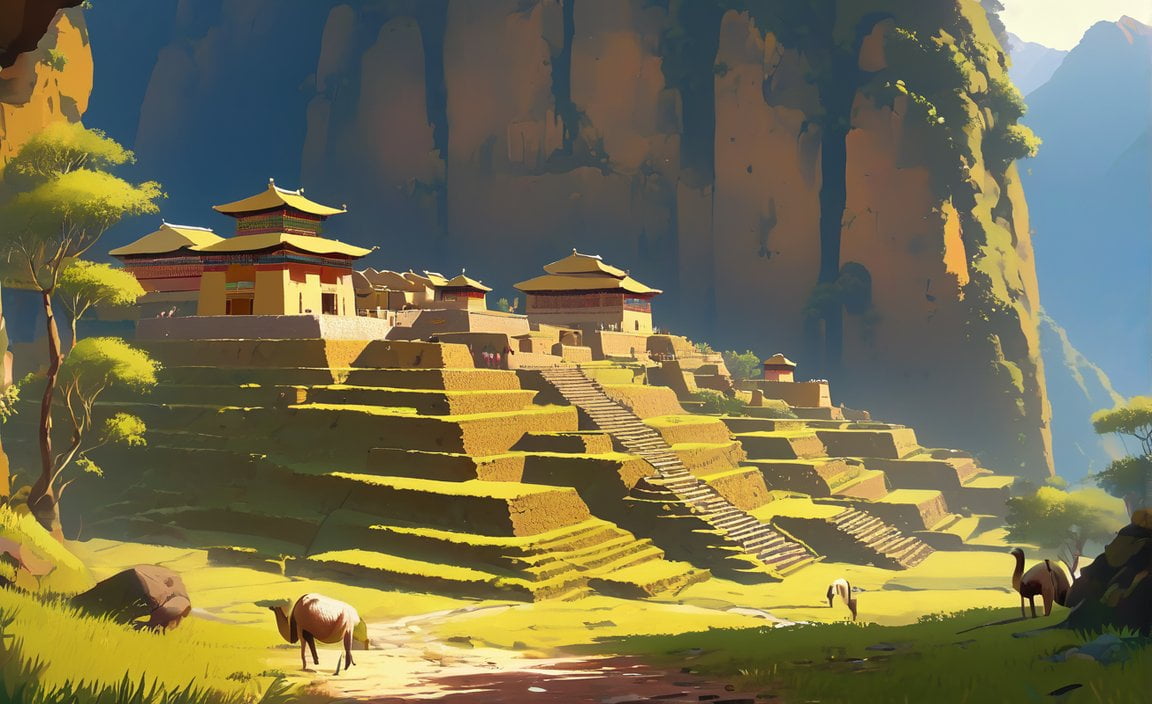
FAQ
Q1: Who were the early inhabitants of Peru?
A1: The early inhabitants of Peru were hunters and gatherers who arrived in the territory of Latin America more than 20,000 years ago. They lived off the land and fruits and used earth tools.
Q2: What are some notable ancient civilizations in Peru?
A2: Peru is home to several ancient civilizations, including the Cupisnique and Chavín cultures. The Norte Chico civilization is considered the oldest civilization in the Americas, while the Inca Empire was a powerful and advanced civilization in Peru.
Q3: What are some technological advancements made by early Peru inhabitants?
A3: Early Peru inhabitants implemented advanced irrigation systems through underground channels and constructed agricultural terraces to improve farming practices. They also developed extensive textile skills and created intricate pottery vessels with portraits.
Q4: How did the arrival of the Spanish impact Peru’s history?
A4: The arrival of the Spanish in the 16th century marked the beginning of Peru’s colonial period. It brought significant social, cultural, and economic changes to the region. Peru experienced a period of social reforms and economic development from 1884 to 1930.
Q5: What is the significance of the Inca Empire in Peru’s history?
A5: The Inca Empire was a powerful and advanced civilization that existed in Peru. It had a sophisticated political and administrative system, extensive road networks, and impressive architectural structures like Machu Picchu. The Inca Empire played a major role in shaping Peru’s history and culture.
- Sept 31 Myth: Unveiling Calendar Secrets - March 18, 2025
- How Long & Till December 18, 2025: Accurate Countdown Guide - March 18, 2025
- Discover Japanese Artists: A Complete History - March 18, 2025
